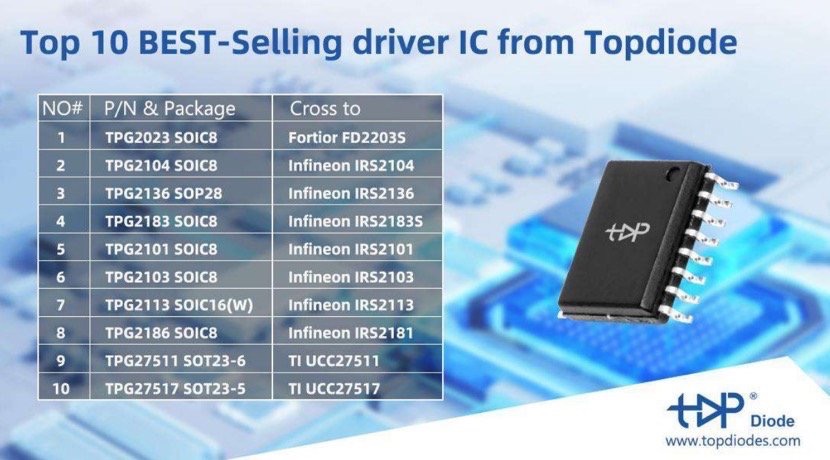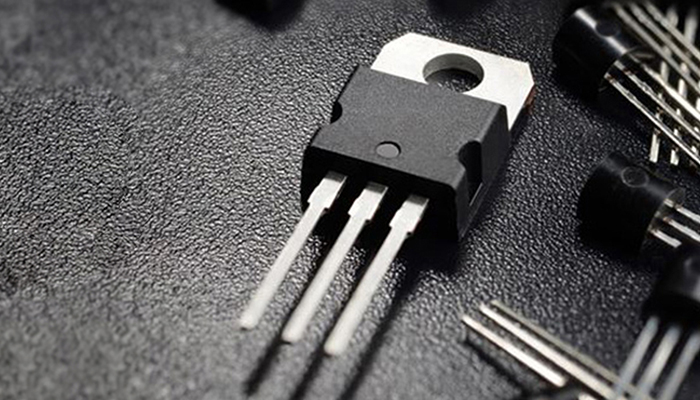The Silent Power Translators: Unveiling the World of Driver ICs
In the bustling metropolis of modern electronics, where microprocessors reign as decision-makers and sensors act as the senses, a crucial yet often unsung class of components works tirelessly behind the scenes: the Driver Integrated Circuit (Driver IC). These specialized chips are the indispensable translators and power amplifiers, bridging the gap between low-power control signals from logic circuits and the high-power demands of actuators and displays that interact with the physical world. Without them, our digital devices would remain silent, dark, and motionless.

The Core Function: Bridging the Power Divide
At its heart, a driver IC solves a fundamental problem. Complex digital logic circuits (like microcontrollers or FPGAs) operate at low voltage and current levels, optimized for processing speed and efficiency. However, the components they need to control – a high-brightness LED, a powerful electric motor, a speaker coil, or a sophisticated display panel – require significantly higher voltage and current to function. A driver IC acts as the intermediary:
- Signal Translation: It interprets the low-power digital or analog control signal from the master controller.
- Power Amplification:It uses an external power supply (often much higher voltage/current than the logic supply) to generate a robust output signal capable of driving the target load.
- Protection & Control: It often incorporates vital protection features (over-current, over-voltage, over-temperature, short-circuit) and control logic (like PWM dimming for LEDs, commutation sequences for motors).
Ubiquitous Applications: Where Driver ICs Make Their Mark
Driver ICs are pervasive, enabling countless technologies we rely on daily:
- Display Technologies:
LCD/LED/OLED Displays: Source and gate drivers precisely control millions of individual pixels, turning data into images on your smartphone, TV, monitor, and smartwatch. They handle high voltages needed for liquid crystal switching and precise current control for OLED pixels.
Micro-LED Displays: Require even more sophisticated, highly integrated driver ICs for individual pixel control at microscopic scales.
- Lighting:
LED Drivers: Convert input power (AC mains or DC) to the precise constant current or constant voltage required by LED strings, enabling efficient and dimmable lighting in homes, offices, automotive headlights, and streetlights.
- Motor Control:
Brushed DC Motor Drivers: Provide simple forward/reverse control and speed regulation via PWM.
Brushless DC (BLDC) / Stepper Motor Drivers: Implement complex commutation sequences using H-bridge configurations to control speed, torque, and position with high efficiency in appliances, drones, robotics, and electric vehicles.
- Power Management & Conversion:
Gate Drivers: Essential for controlling high-power switches like MOSFETs and IGBTs in switch-mode power supplies (SMPS), motor drives, and inverters. They rapidly switch these transistors on/off with sufficient current to minimize losses.
- Audio Systems:
Audio Amplifiers (Class D, etc.): While often called amplifiers, they function as specialized driver ICs, taking low-level audio signals and driving speakers with significant power.
- Interface & Communication:
Line Drivers: Boost signal strength and integrity for communication over longer distances (e.g., RS-485, CAN bus transceivers).
Relay Drivers: Provide the necessary current to activate the coil of an electromechanical relay.

Key Challenges and Design Considerations
Designing effective driver ICs involves navigating several challenges:
* Power Handling & Efficiency: Managing high currents and voltages generates heat. Efficient design (minimizing switching/conduction losses) and robust thermal management (heat sinking, package selection) are critical for reliability and performance.
* Switching Speed & Precision: Especially critical for display drivers (pixel timing), motor control (commutation timing), and gate drivers (minimizing switching losses). Faster switching requires careful management of parasitic inductance/capacitance to prevent voltage spikes and ringing.
* Integration: Modern driver ICs often integrate multiple functions – logic control, level shifting, protection circuits, and sometimes even the power switches themselves (e.g., in integrated motor drivers or LED drivers). Balancing complexity, cost, and performance is key.
* Electromagnetic Compatibility (EMC): High-speed switching can generate electromagnetic interference (EMI). Driver ICs must be designed with features (slew rate control, shielding, layout techniques) to mitigate EMI.
* Reliability & Protection: Operating in harsh environments (automotive, industrial) demands robust protection against electrical faults, voltage transients, and extreme temperatures.
The Future of Driver ICs
As technology advances, driver ICs continue to evolve:
* Higher Integration: Combining control logic, drivers, and even power MOSFETs/IGBTs into single packages (Intelligent Power Modules – IPMs, System-in-Package – SiP) for smaller size and improved performance.
* Wide Bandgap Semiconductors: Adoption of Gallium Nitride (GaN) and Silicon Carbide (SiC) transistors demands specialized, ultra-fast gate drivers to fully exploit their efficiency and speed advantages, particularly in high-frequency power conversion and motor drives.
* Higher Resolution & Speed: Display drivers pushing the limits for 8K+, high refresh rates (240Hz+), and advanced technologies like Micro-LED and Mini-LED backlighting with local dimming.
* Increased Intelligence: Embedding more diagnostic features, adaptive control algorithms, and communication interfaces (like I2C, SPI) for smarter power management and system monitoring.
* Focus on Ultra-Low Power: For battery-powered IoT devices, driver ICs must minimize quiescent current and maximize efficiency at light loads.
Conclusion: The Essential Enablers
Driver ICs may operate in the background, but they are fundamental enablers of modern electronics. They are the muscle and the nervous system translators, taking the digital brain’s commands and turning them into light, motion, sound, and power. From the vibrant display on your phone to the quiet hum of your electric vehicle, from the efficient lighting in your home to the precise movements of industrial robots, driver ICs are the silent partners, faithfully amplifying control into action. As the demands on electronic systems grow – for efficiency, power density, speed, and intelligence – the innovation and importance of driver ICs will only continue to rise, solidifying their place as indispensable components in our increasingly electrified world.

Topdiode produces high-quality Driver ICs for crossover, we have replacements for Infineon, TI & Fortior, please check below:
If you want to explore more component,
please visit our website:https://www.topdiodes.com
Or send inquiry to : Luna@topdiode.com



